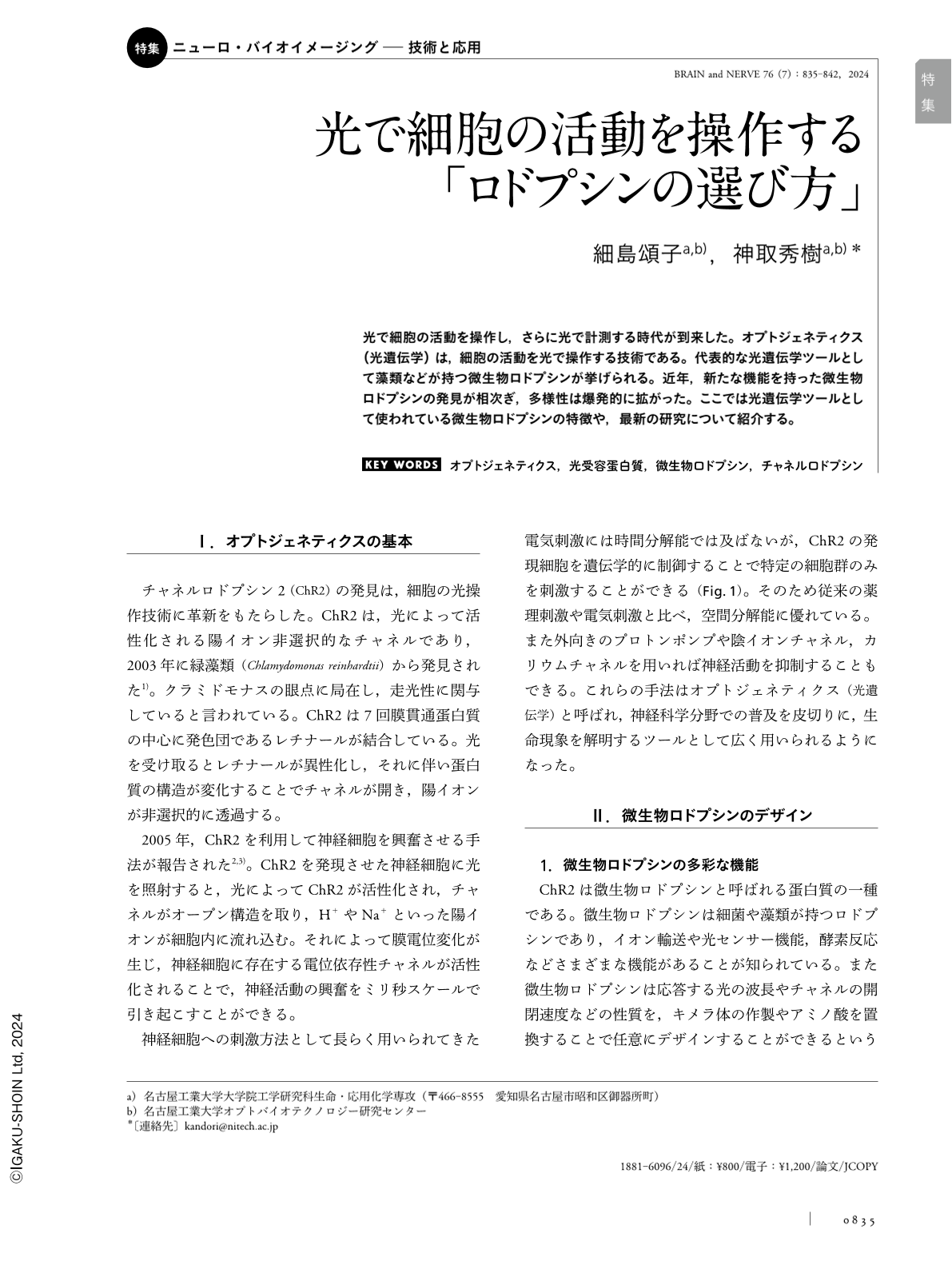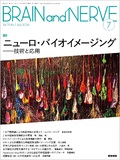Japanese
English
- 有料閲覧
- Abstract 文献概要
- 1ページ目 Look Inside
- 参考文献 Reference
光で細胞の活動を操作し,さらに光で計測する時代が到来した。オプトジェネティクス(光遺伝学)は,細胞の活動を光で操作する技術である。代表的な光遺伝学ツールとして藻類などが持つ微生物ロドプシンが挙げられる。近年,新たな機能を持った微生物ロドプシンの発見が相次ぎ,多様性は爆発的に拡がった。ここでは光遺伝学ツールとして使われている微生物ロドプシンの特徴や,最新の研究について紹介する。
Abstract
All-optical methods that provide deeper understanding of neural activity are currently being developed. Optogenetics is a biological technique useful to control neuronal activity or life phenomena using light. Microbial rhodopsins are light-activated membrane proteins used as optogenetic tools. Microbial rhodopsins such as channelrhodopsin2 (ChR2) consist of seven-pass transmembrane proteins with a covalently bound retinal. Light absorption is followed by photoisomerization of the all-trans retinal to a 13-cis configuration and subsequent conformational changes in the molecule, with consequent permeability of the channel structure to ions. Recent studies have reported the discovery of microbial rhodopsins with novel functions. Microbial rhodopsin diversity has also increased. We describe the characteristics of microbial rhodopsins used as optogenetic tools and the latest research in this domain.

Copyright © 2024, Igaku-Shoin Ltd. All rights reserved.


